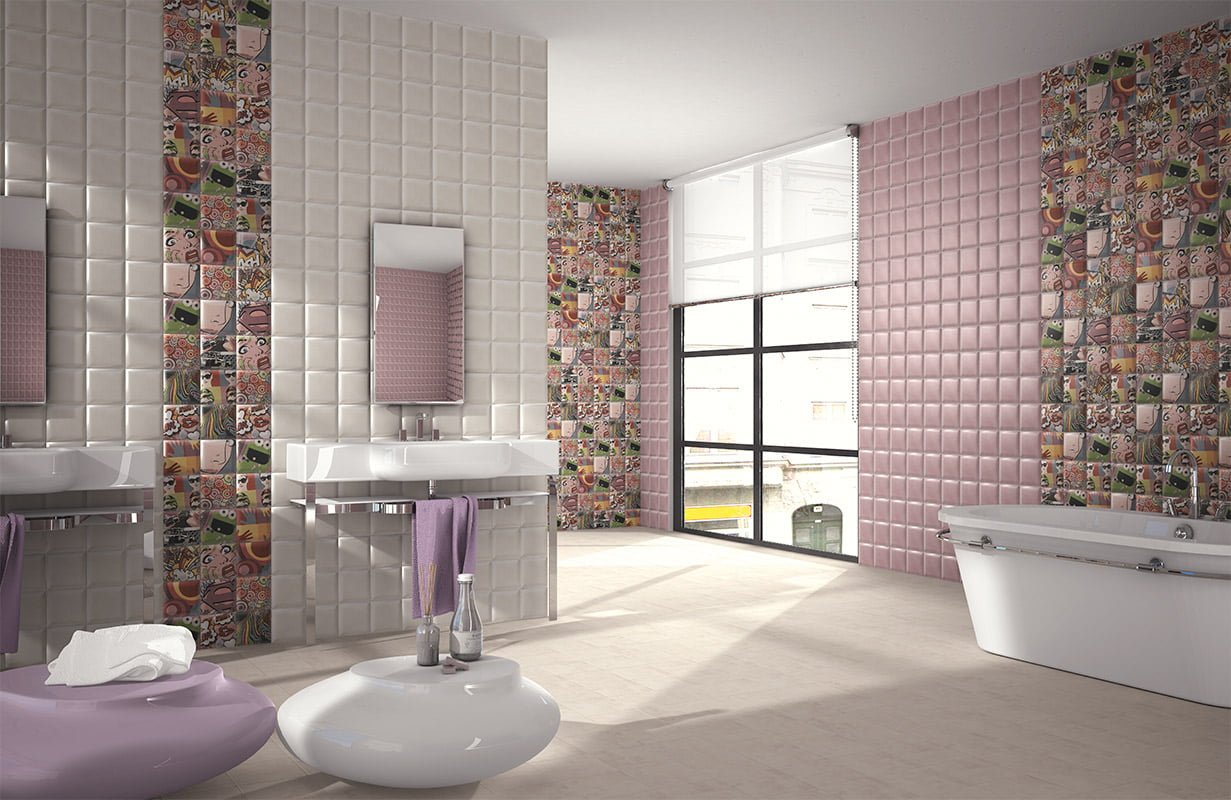Transform Your Space: The Ultimate Guide to Bathroom Tiles
When it comes to bathroom renovations or new constructions, one of the most significant decisions homeowners face is choosing the right Bathroom Tiles. Tiles not only enhance the aesthetics of your space but also play a crucial role in its functionality. With countless options available, understanding the various types of tiles, their benefits, and installation methods is essential. This comprehensive guide will walk you through everything you need to know about bathroom tiles to help you make an informed decision.
Types of Bathroom Tiles
Ceramic Tiles
Ceramic tiles are a popular choice for bathrooms due to their durability, affordability, and versatility. Made from natural clay and fired at high temperatures, these tiles are resistant to moisture, stains, and wear. They come in various colors, patterns, and sizes, making them suitable for any design theme, from modern to traditional.
Porcelain Tiles
Porcelain tiles are a type of ceramic tile but are denser and less porous. This makes them even more resistant to moisture and staining, making them ideal for high-traffic areas like bathrooms. Porcelain tiles can mimic natural stone or wood, providing a luxurious look at a fraction of the cost.
Natural Stone Tiles
Natural stone tiles, such as granite, marble, slate, and travertine, bring a unique and elegant feel to bathrooms. Each tile is distinct due to the natural variations in color and pattern. While they are visually stunning, natural stone tiles require more maintenance than ceramic or porcelain due to their porous nature, which can lead to staining and damage if not sealed properly.
Vinyl Tiles
Vinyl tiles are an excellent budget-friendly option for bathroom flooring. They are water-resistant, easy to install, and available in a wide variety of designs, including options that mimic wood or stone. Luxury vinyl tiles (LVT) offer even greater durability and comfort underfoot.
Glass Tiles
Glass tiles add a touch of sophistication and are often used for accents, backsplashes, or decorative borders. They reflect light beautifully and can make small spaces appear larger. However, they can be slippery when wet, so it’s essential to consider their placement carefully.
Benefits of Using Bathroom Tiles
Durability
One of the most significant advantages of tiles is their durability. Bathroom tiles can withstand moisture, heavy foot traffic, and wear over time, making them an excellent long-term investment.
Easy Maintenance
Tiles are relatively easy to clean and maintain. Most tiles require just regular sweeping and mopping with mild soap and water. Unlike carpeting or vinyl, tiles do not harbor allergens, mold, or mildew, promoting a healthier bathroom environment.
Aesthetic Appeal
With a wide variety of colors, textures, and patterns available, bathroom tiles can dramatically enhance the look of your space. They can be used to create stunning focal points, accent walls, or cohesive designs throughout the bathroom.
Water Resistance
Bathroom tiles are designed to be water-resistant, making them ideal for wet environments. This quality helps to prevent damage from leaks, spills, and humidity, which can be detrimental to other flooring materials.
Value Addition
Well-chosen tiles can increase the resale value of your home. A beautifully tiled bathroom can attract potential buyers, making your property more appealing in the competitive real estate market.
Choosing the Right Bathroom Tiles
Consider the Size of Your Bathroom
The size of your bathroom plays a crucial role in determining the type and size of tiles you should choose. For small bathrooms, lighter colors and smaller tiles can create the illusion of more space. Conversely, larger tiles can work well in bigger bathrooms, making the space feel less cluttered.
Think About Style and Theme
Your bathroom tiles should complement the overall design theme of your home. Whether you prefer a modern, minimalist look or a more traditional, rustic feel, there’s a tile option to match your vision. Consider patterns, colors, and finishes that align with your style preferences.
Evaluate Slip Resistance
Safety is paramount in a bathroom, especially when it comes to flooring. Look for tiles with a slip-resistant surface to prevent accidents in wet conditions. Textured or matte finishes can offer better grip compared to glossy tiles.
Calculate Your Budget
Tiles come in a range of price points, so it’s essential to set a budget before you start shopping. While it can be tempting to splurge on high-end materials, consider the long-term costs, including installation and maintenance. There are plenty of beautiful options available at various price ranges.
Research Maintenance Requirements
Different types of tiles come with varying maintenance needs. For instance, natural stone tiles require regular sealing to protect against stains, while ceramic and porcelain tiles are generally easier to maintain. Make sure you choose tiles that fit your lifestyle and willingness to perform maintenance.
Installation of Bathroom Tiles
Preparing the Surface
Before installing tiles, ensure that the surface is clean, dry, and level. If you’re working on a wall, you may need to install a cement backer board for added stability. For floors, any existing flooring should be removed to create a solid base.
Planning the Layout
Plan your tile layout before beginning installation. Use chalk lines or a laser level to create a grid, ensuring that tiles are placed evenly. This step is crucial for achieving a professional-looking finish.
Applying Adhesive
Choose the appropriate adhesive for your tile type. Thin-set mortar is commonly used for ceramic and porcelain tiles, while a special adhesive may be necessary for natural stone or glass tiles. Apply the adhesive using a notched trowel to create a strong bond.
Installing Tiles
Begin laying tiles from the center of the room or the most visible area. Press each tile firmly into the adhesive and use spacers to maintain even gaps for grout. Continue until the entire area is covered, cutting tiles as needed to fit along edges and corners.
Grouting
Once the adhesive has cured (usually 24 hours), remove the spacers and prepare to grout. Choose a grout color that complements your tiles. Apply the grout using a rubber float, pressing it into the gaps and wiping away excess with a damp sponge. Allow the grout to cure as per manufacturer instructions.
Sealing
If you’ve used natural stone tiles, sealing the surface is crucial to prevent staining and moisture damage. Follow the manufacturer’s instructions for the best results.
Maintaining Your Bathroom Tiles
Regular Cleaning
To keep your bathroom tiles looking their best, establish a regular cleaning routine. Sweep or vacuum to remove dirt and debris, and mop with a gentle cleaner suitable for your tile type.
Addressing Stains and Grime
For tougher stains, consider using a tile-specific cleaner or a homemade solution of vinegar and water. Always test a small area first to ensure the cleaner won’t damage the tile or grout.
Grout Maintenance
Grout can discolor over time, so consider using a grout sealer to protect it from moisture and stains. Re-grouting may be necessary every few years, especially in high-traffic areas.
Avoid Harsh Chemicals
When cleaning bathroom tiles, avoid using harsh chemicals or abrasive tools that can scratch or damage the surface. Stick to gentle cleaners and soft cloths or sponges.
Trending Bathroom Tile Designs
Large Format Tiles
Large format tiles are becoming increasingly popular for their sleek, modern appearance. They minimize grout lines, creating a more seamless look in bathrooms.
Mosaic Tiles
Mosaic tiles offer a fun and colorful way to add personality to your bathroom. They can be used as accents, backsplashes, or even entire walls for a bold statement.
Textured Finishes
Textured tiles add depth and interest to bathroom spaces. Whether through a matte finish or raised patterns, textured tiles can enhance both design and functionality.
Eco-Friendly Options
Sustainable tiles made from recycled materials are gaining traction as homeowners seek environmentally friendly options. These tiles come in various styles and colors, allowing you to go green without compromising on aesthetics.
Conclusion
Choosing the right bathroom tiles is a vital part of creating a beautiful and functional space. By considering the various types of tiles available, their benefits, and installation and maintenance practices, you can make informed decisions that enhance the look and durability of your bathroom. Whether you opt for classic ceramic, luxurious natural stone, or budget-friendly vinyl, the right tiles can transform your bathroom into a stunning retreat. Embrace your creativity and explore the endless possibilities that bathroom tiles offer for your next renovation project.






